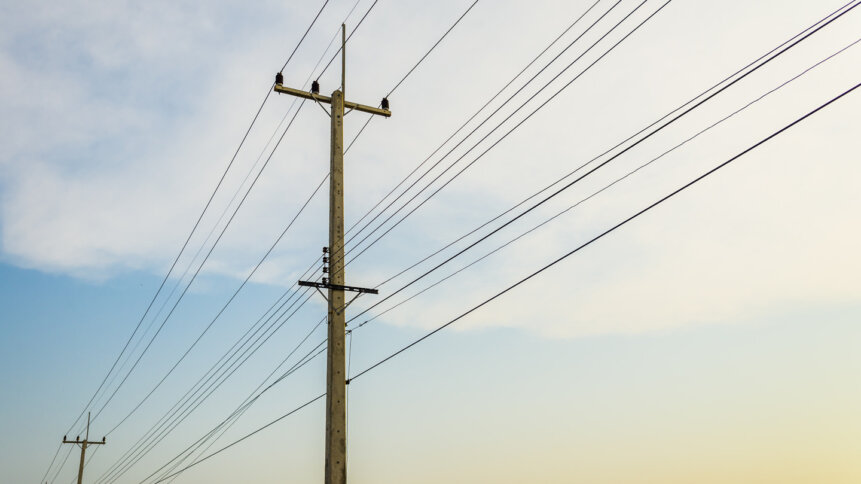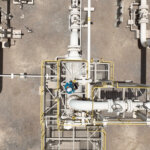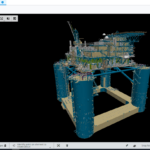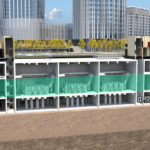Digital twins and the electrical grid

With winter brownouts and blackouts an increasing threat to business continuity, it’s comforting to understand that the electrical grid, both locally, nationally, and around the world, is undergoing a process of significant digital transformation, and that with luck and scheduling, energy delivery in the relatively near future will be a lot more even and consistent than anything we’ve ever known. Part of that digital transformation is down to the increasing use of digital twins, so we sat down with Joe Travis, Vice President of Energy Industry Solutions at Bentley Systems (a leading provider of digital twin technology), to find out whether the future was as bright – and consistent – as promised.
THQ:
Clearly, there are a lot of challenges in the whole electrical grid area. What are the most challenging things, and the most interesting things that technology like digital twins can tackle?
READ NEXT

Digital twins in power generation
Two sides to every story.
JT:
We’re focused on two major sides of the electrical grid. First and foremost, it’s around the rules, the resilience and reliability of the grid. We want to make sure that the grid stays up, and that there are as few outages as possible, for any reason.
So one of the primary things we have our digital twin software do is to make sure that the grid has been designed with strength and reliability in mind.
And that goes everywhere from the generation side all the way to the meter on the house, and everything in between.
When we design the electrical grid, we’re focused on the structural integrity of the grid. So the transmission towers that we have are highly focused on structural capabilities. When we design our substations, same thing, substations need to be designed with strength in mind.
We also have to consider pole loading for wooden poles, to make sure that the cross arms and the lights and all the transformers and everything are all strong enough, that the load on the pole is not going to make them fall over. These are all weird things that you don’t think about until you actually have to think about them.
With the increasing frequency of storms, and the increase in both the volume and the velocity of some of those storms, it’s really important for us to think about both the structural integrity and the resilience reliability of the grid. That’s a big part of why we design our grids the way we do.
But in terms of digital twins, it’s not just those design decisions we can model. It’s mapping all of those assets on the grid, so that if you do encounter a major hurricane, or tornado, you’re able to look back on your mapping system, and you know exactly what was out there. So that when you go to fix it, the first time you go, you have all the right equipment on the truck, you’re ready to go and get the power back on as quick as possible. That’s really a primary function of the grid, and the software that we have for the grid.
The other half of the equation.
THQ:
So digital twins help in the design process in terms of resilience and reliability, and in repairs by ensuring a first-time solution with all the right equipment. What’s the second side you mentioned?
JT:
The second side is really trying to understand where that power is coming from, from the generation side of it. As we transition to the world of alternatives and renewables, that’s something that we’re definitely keeping an eye on, investing in making sure we understand how to feed in renewables from hydro, from solar, from geothermal, all those ways you can generate power, so that we end up with a strong grid that’s able to take power from all those sources.
That’s the two-pronged effort we’re making to ensure that the grid stays resilient today, and evolves to be resilient for tomorrow’s needs too. As we generate more energy from a variety of sources, we need to make sure we’re able to keep the grid growing and reliable for consumers.
THQ:
We were going to ask about the change in the nature of the job of keeping the lights on with the growing climate issues that we have.
Is it the same sort of challenge now as it used to be?
JT:
I think the challenge itself remains the same – as you say, keep the lights on as long and as consistently as possible. But the approach to the job has changed significantly as technology has advanced. We’ve seen things go from paper maps and drawing on old aerial photos, to digitizing those maps and photos, to the world of GPS and mapping with a different level of accuracy.
Of course, now with reality modeling, that’s one major adoption that we’ve seen grow over the last few years, and we’re going to see used a tremendous amount in the next few years. As we move forward, the ability to step back and look at the way utilities have grown organically over the last 50-60 years in many cases is amazing. And what we’re finding is that in many areas, they don’t know what they have. There’s often a kind of a false sense of security of exactly what’s on that document or in that mapping system and what’s really in the field.
So now to be able to take out an inexpensive drone with very simple training, to use our software and map that substation or transmission tower very quickly, and understand what you already have out there and what you can build upon, it’s a major difference that we’re seeing.
The evolving reality of power.
THQ:
Are power grid operators open to this new evolution of technology?
JT:
Sure, some are. Some utilities are hiring their own flight crews are buying their own drones. They’re becoming certified and they’re able to map their own systems. Others are invested in subcontractors in that ecosystem to go out there and do the reality-mapping for them.
That’s a tremendous benefit to the grid overall, to be able to understand very quickly what you have existing in terms of the operations and maintenance of it as you move forward.
THQ:
How much of the overall grid is in your view?
JT:
We cover everything from the generation side, including the dams for hydro and renewables with the wind. As that power flows, the transmission side of things goes through the towers that we’re designing with PLS CAD, and our substations that step down that power to a level at which you can distribute it. And then of course, we are highly focused on the substation, but also on the distribution network that takes it to the meter on the house.
So we cover everything involved.
In fact, even if you go a level before the windmills, you have to do subsurface mapping, and especially subsea mapping, you have to understand what the soil is like before we ever even build that windmill. So we also touch that part, because we want to make sure that if you’re going to put that wind farm up, it’s not going to fall over! That you’re building it with the right resilience and structural integrity.
In Part 2 of this article, we’ll look at what ideal resilience looks like in the electricity grid, and how digital twins can not only help deliver it, but maintain it for the foreseeable future in a much more rational way than has been possible in the pre-twin era.









